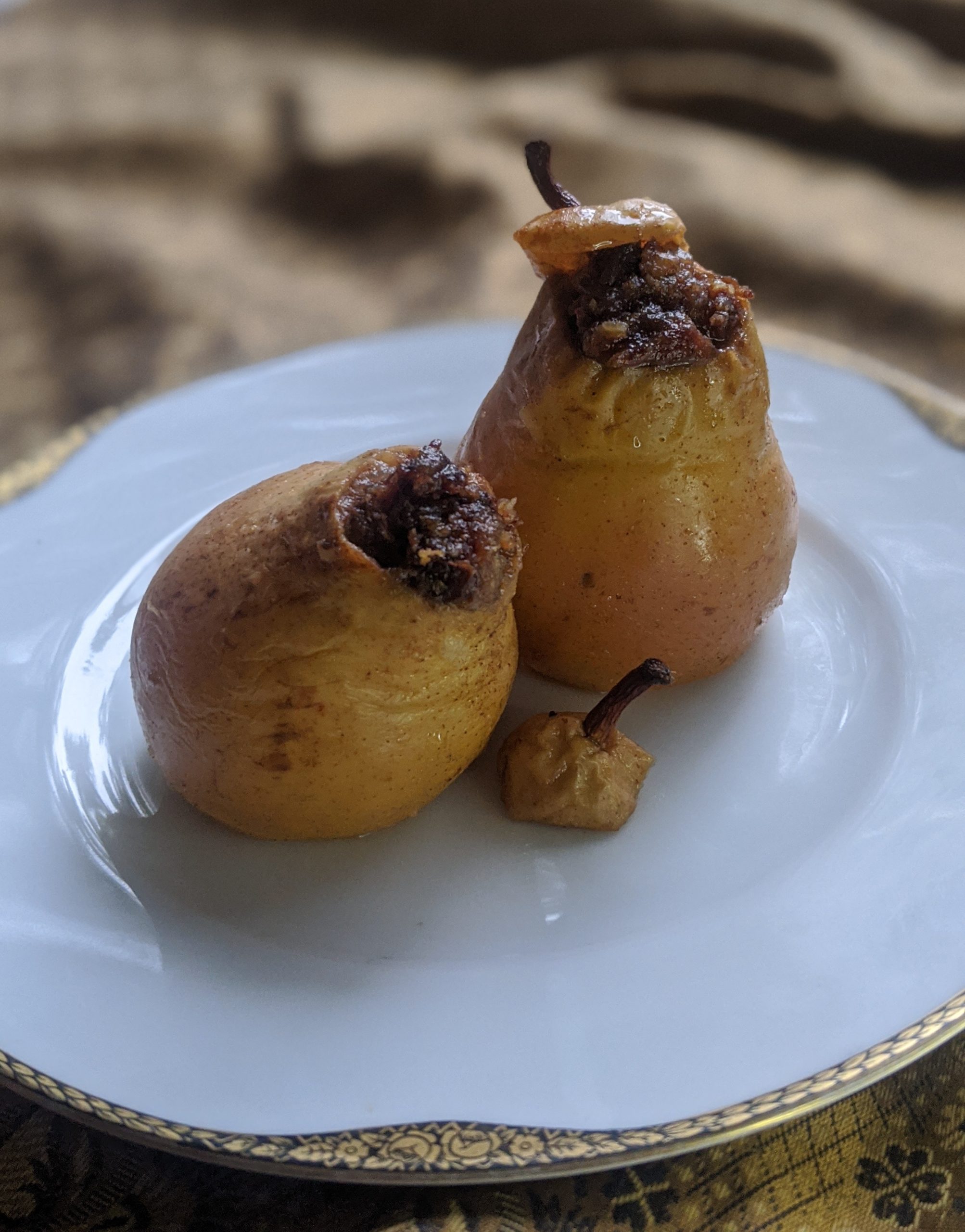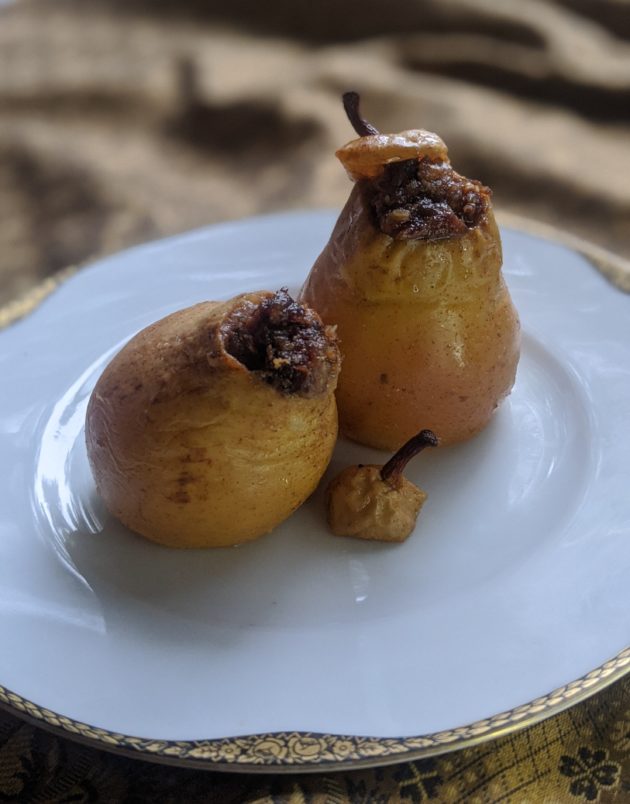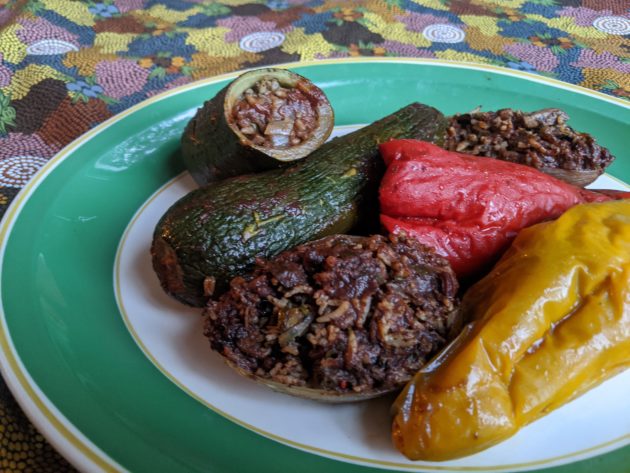
Stuffed with Abundance and Gratitude
What better way to celebrate the abundance of the harvest than by stuffing vegetables with an abundance of meat, rice, vegetables and fruits! No wonder stuffed foods are a traditional favorite for Sukkot, the festive fall holiday, for Jews from around the world.

Among Ashkenazim, Jews of Eastern European heritage, Sukkot is a time for simmering pots of stuffed cabbage, often in a tangy sweet-and-sour sauce. Menus might also include stuffed peppers, knishes with a variety of fillings matzah ball soup, kugel and gefilte fish– which was originally fish that was filleted, ground and stuffed back into the fish skin.
Being Sephardic, with grandparents from the Ottoman Empire, I am drawn to the customs and traditions of my heritage and other non-Ashkenazic Jews including those from Persia, Iraq, Yemen, North Africa and the Middle East. These communities have a long history of stuffing all kinds of vegetables and grape leaves for Sukkot, as well as Shabbat and other special occasions.
“Dolma” is the most common name for Sephardic stuffed veggies, coming from the Turkish word “dolmak” meaning “to be filled.” But they are also known by many other names given the many languages involved. In Ladino, they are often, though not always, called “reyenadas.” Syrians refer to the general category of stuffed vegetables as “mehshi.”
Usually, when we say stuffed vegetables, we think of cutting the vegetables in half to create “boats” to fill or cutting the tops off bell peppers to fill them easily. This year, I became fascinated by stuffing whole zucchini and Romano peppers the long way. Some people baked sourdough. I stuffed vegetables.
To me, any stuffed vegetable looks good, but the impressive presentation of long pieces of hallowed out zucchini and Romano peppers overflowing with stuffing reminds me of the very American Thanksgiving symbol of the cornucopia, the horn of plenty.

To my surprise, hallowing the zucchini is easier to make than it looks; I’ve provided detailed step-by-step instructions. In the wonderful tradition of no-waste cooking, the zucchini cores are chopped to help provide a “bed” for the stuffed vegetables. And, given my love of the sweet tang pomegranate molasses, I added some to the traditional tomato sauce for extra tastiness.
Since I was so into stuffing, I decided to try stuffing a fall fruit, specifically pears, and love the results. The recipe below works for apples as well, with a little extra baking time to soften the apples.
Stuffed vegetables are nearly a one-dish meal, which makes them appealing when feeding larger groups visiting our sukkahs. Once ready, to easily carry out to our families and guests. Add a few salads and some challah or fresh flatbread and you have a feast.
Except this year, like so much else, Sukkot is different. Not only are we not entertaining large numbers of people in our sukkahs (anyone else giving up on even building a sukkah?), but it can be hard to feel that sense of abundance. I actually realized this last week while presenting the Lilith class on stuffing vegetables and fruits (via Zoom, of course). But then I realized something else.
As always, I was happy to be teaching about food and traditions, but I also suddenly felt abundantly grateful. I needed to feel this gratitude and to recognize how much I do have…all the physical comforts, family and friends, my health, people who are taking care of others who aren’t healthy at this time…I am even grateful for my less-than-spotless house that needs cleaning because it means I have a home to shelter and keep me during this difficult time.
Maybe this year especially, part of Sukkot means feeling an abundance of gratitude for all we do have and for being filled also with the hope that next year we will sit in sukkahs under the stars together.



